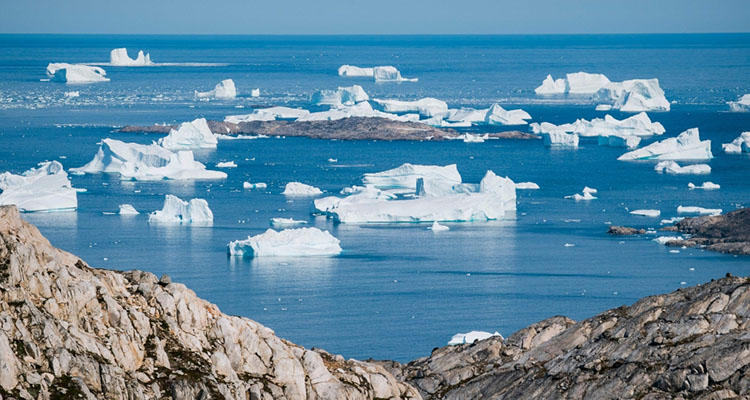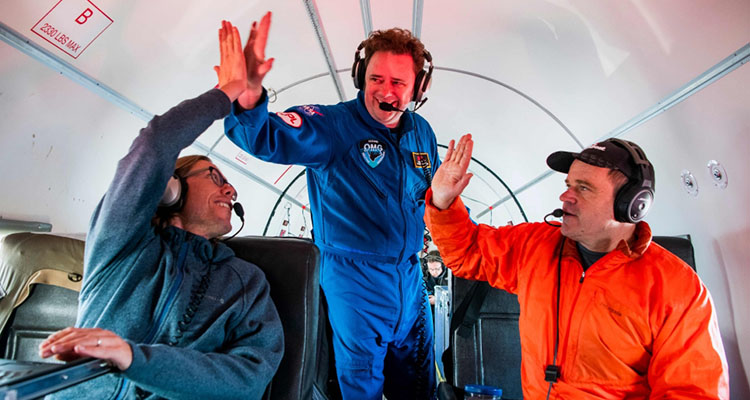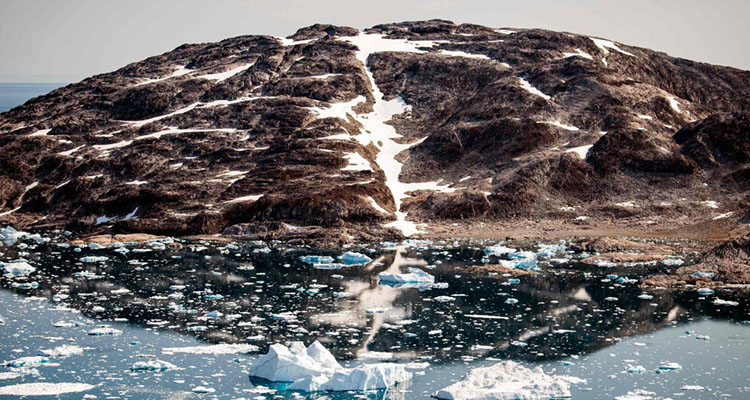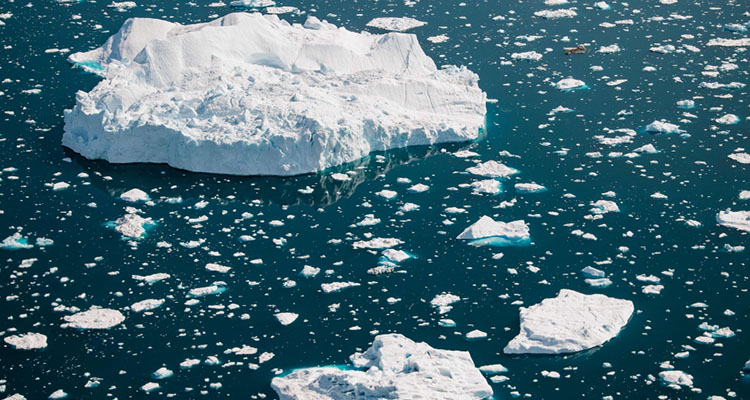Skimming low over the gleaming white glaciers on Greenland’s coast in a modified 1940s plane, three NASA scientists, led by an Elvis-impersonating oceanographer, waited to drop a probe into the water beneath them.
They are part of Oceans Melting Greenland — or OMG — a mission that has flown around the vast island for four summers, dropping probes to collect data on how oceans contribute to the rapid melt of Greenland’s ice.
Willis is investigating how warmer layers of water off the coast come into contact with glaciers.
Dressed in a blue jumpsuit and with thick sideburns that give a hint of his occasional pastime impersonating Elvis, Joshua Willis, 44, is the oceanographer from NASA’s Jet Propulsion Laboratory behind the project – and, along with his wife, its name.
Three NASA scientists drop probes into the Arctic to measure the impact of the oceans on ice melt.
‘Ice cube under a hair dryer’
Willis is investigating how warmer layers of water off the coast come into contact with glaciers and how this effects how quickly they melt.
“A lot of people think of the ice here as melting from the air warming, sort of like an ice cube under a hair dryer, but in fact the oceans are also eating away at the ice’s edges,” Willis said.
The scientists are part of Oceans Melting Greenland or OMG.
OMG surveys Greenlandic glaciers in the winter, comparing it with the data they collect about the oceans in the summer over a five-year period, which Willis hopes will allow researchers to better predict sea-level rise.
Greenland ‘a challenge’
NASA — best known for the moon landings and space travel — started to study the earth’s climate in greater depth from the 1970s when its inter-planetary exploration budget was reduced, using its satellites to look at the earth.
With OMG, Willis hopes they can provide data to give better predictions of sea-level rise.
Today it has more than a dozen satellites in orbit monitoring earth’s seas, ice, land and atmosphere, along with missions like OMG, which Willis hopes will provide data to give better predictions of sea-level rise around the globe.
Agence France-Presse







